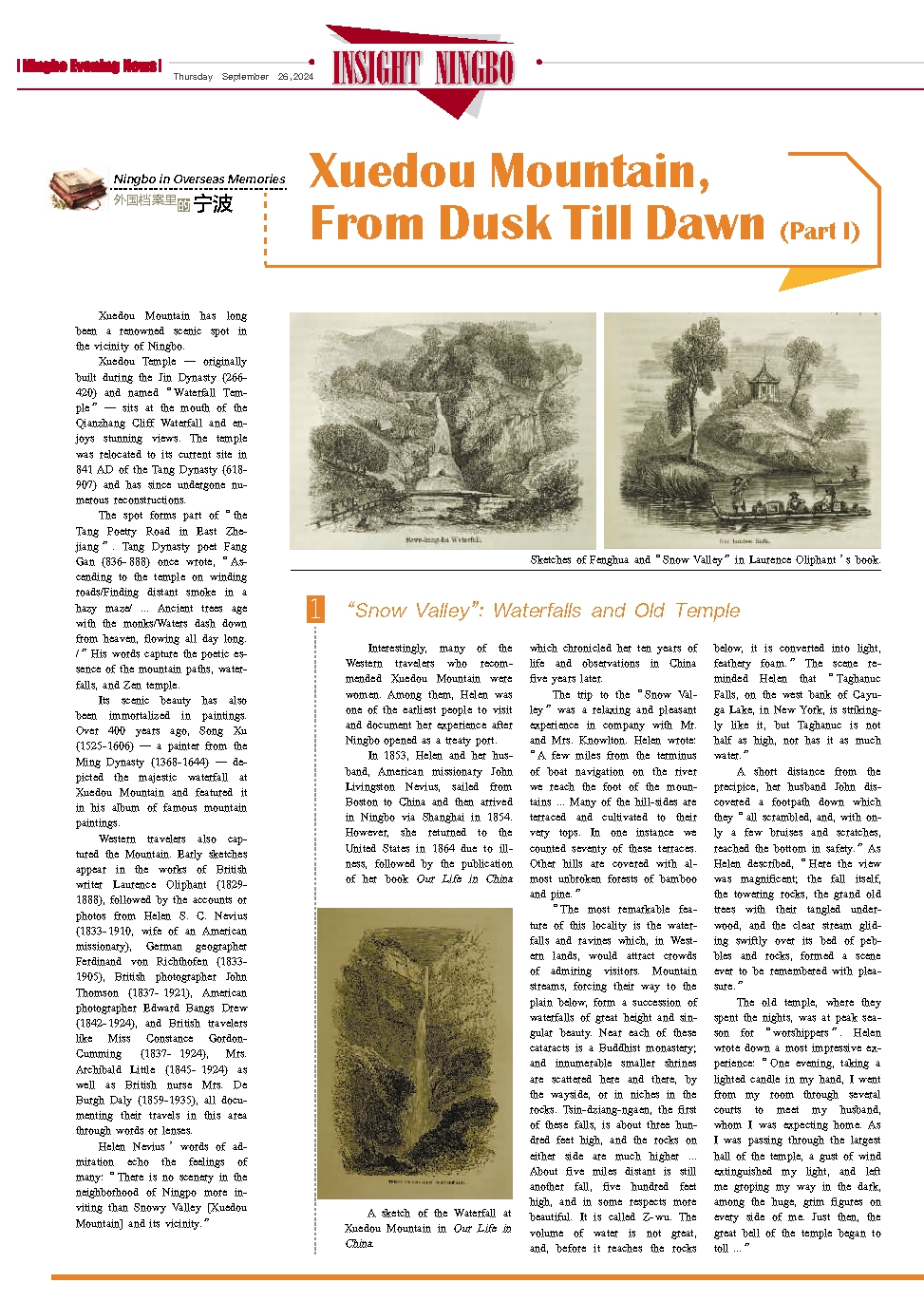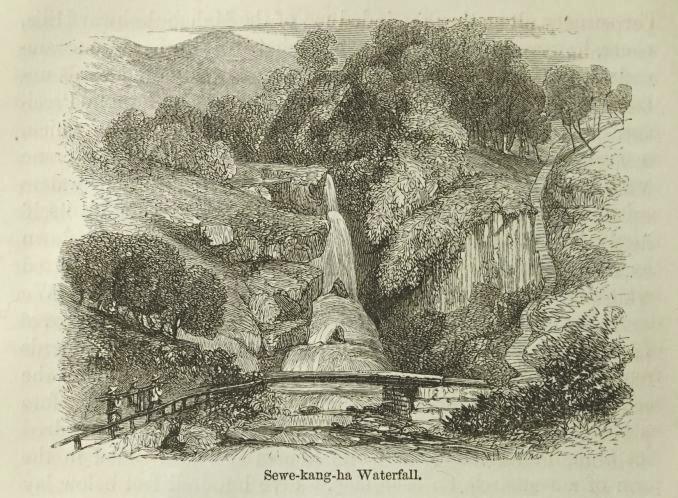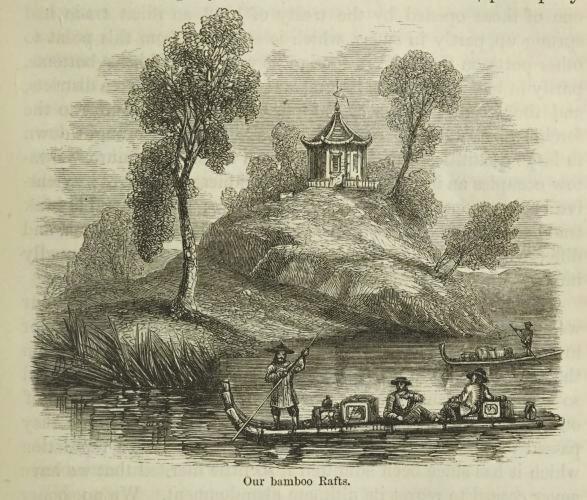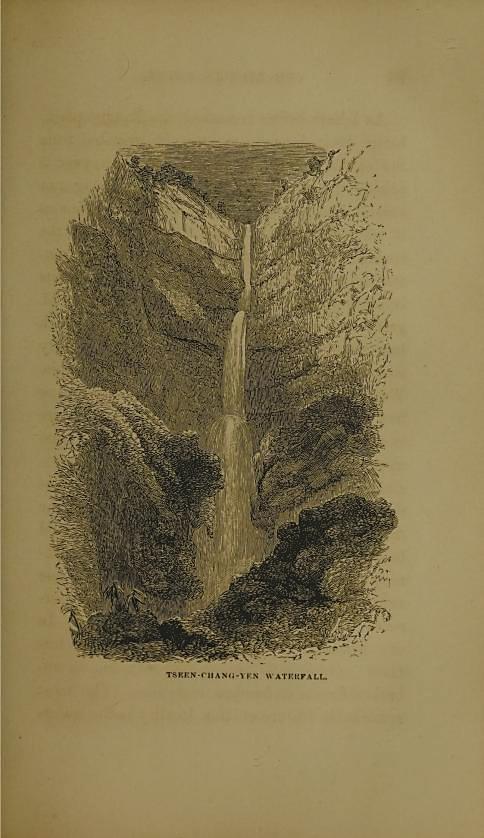Xuedou Mountain has long been a renowned scenic spot in the vicinity of Ningbo.
Xuedou Temple — originally built during the Jin Dynasty (266-420) and named “Waterfall Temple” — sits at the mouth of the Qianzhang Cliff Waterfall and enjoys stunning views. The temple was relocated to its current site in 841 AD of the Tang Dynasty (618-907) and has since undergone numerous reconstructions.
The spot forms part of “the Tang Poetry Road in East Zhejiang”. Tang Dynasty poet Fang Gan (836-888) once wrote, “Ascending to the temple on winding roads/Finding distant smoke in a hazy maze/ ... Ancient trees age with the monks/Waters dash down from heaven, flowing all day long./” His words capture the poetic essence of the mountain paths, waterfalls, and Zen temple.
Its scenic beauty has also been immortalized in paintings. Over 400 years ago, Song Xu (1525-1606) — a painter from the Ming Dynasty (1368-1644) — depicted the majestic waterfall at Xuedou Mountain and featured it in his album of famous mountain paintings.
Western travelers also captured the Mountain. Early sketches appear in the works of British writer Laurence Oliphant (1829-1888), followed by the accounts or photos from Helen S. C. Nevius (1833-1910, wife of an American missionary), German geographer Ferdinand von Richthofen (1833-1905), British photographer John Thomson (1837-1921), American photographer Edward Bangs Drew (1842-1924), and British travelers like Miss Constance Gordon-Cumming (1837-1924), Mrs. Archibald Little (1845-1924) as well as British nurse Mrs. De Burgh Daly (1859-1935), all documenting their travels in this area through words or lenses.
Helen Nevius’ words of admiration echo the feelings of many: “There is no scenery in the neighborhood of Ningpo more inviting than Snowy Valley [Xuedou Mountain] and its vicinity.”
“Snow Valley”: Waterfalls and Old Temple
Interestingly, many of the Western travelers who recommended Xuedou Mountain were women. Among them, Helen was one of the earliest people to visit and document her experience after Ningbo opened as a treaty port.
In 1853, Helen and her husband, American missionary John Livingston Nevius, sailed from Boston to China and then arrived in Ningbo via Shanghai in 1854. However, she returned to the United States in 1864 due to illness, followed by the publication of her book Our Life in China which chronicled her ten years of life and observations in China five years later.
The trip to the “Snow Valley” was a relaxing and pleasant experience in company with Mr. and Mrs. Knowlton. Helen wrote: “A few miles from the terminus of boat navigation on the river we reach the foot of the mountains ... Many of the hill-sides are terraced and cultivated to their very tops. In one instance we counted seventy of these terraces. Other hills are covered with almost unbroken forests of bamboo and pine.”
“The most remarkable feature of this locality is the waterfalls and ravines which, in Western lands, would attract crowds of admiring visitors. Mountain streams, forcing their way to the plain below, form a succession of waterfalls of great height and singular beauty. Near each of these cataracts is a Buddhist monastery; and innumerable smaller shrines are scattered here and there, by the wayside, or in niches in the rocks. Tsin-dziang-ngaen, the first of these falls, is about three hundred feet high, and the rocks on either side are much higher ... About five miles distant is still another fall, five hundred feet high, and in some respects more beautiful. It is called Z-wu. The volume of water is not great, and, before it reaches the rocks below, it is converted into light, feathery foam.” The scene reminded Helen that “Taghanuc Falls, on the west bank of Cayuga Lake, in New York, is strikingly like it, but Taghanuc is not half as high, nor has it as much water.”
A short distance from the precipice, her husband John discovered a footpath down which they “all scrambled, and, with only a few bruises and scratches, reached the bottom in safety.” As Helen described, “Here the view was magnificent; the fall itself, the towering rocks, the grand old trees with their tangled underwood, and the clear stream gliding swiftly over its bed of pebbles and rocks, formed a scene ever to be remembered with pleasure.”
The old temple, where they spent the nights, was at peak season for “worshippers”. Helen wrote down a most impressive experience: “One evening, taking a lighted candle in my hand, I went from my room through several courts to meet my husband, whom I was expecting home. As I was passing through the largest hall of the temple, a gust of wind extinguished my light, and left me groping my way in the dark, among the huge, grim figures on every side of me. Just then, the great bell of the temple began to toll ...”





